Tony Timpone’s Exclusive Talk with Stewart (Lyle) Thorndike (Bad Things)


Good Women Doing “Bad Things”
By TONY TIMPONE
The Shining has inspired countless horror films, and those looking for a version as seen through a queer lens will appreciate female writer/director Stewart (Lyle) Thorndike’s Bad Things. A June world premiere at the Tribeca Film Festival, it begins streaming on Shudder and AMC+ this Friday.
In the movie, a group of women, several entangled in messy romantic relationships, travel to a Northeast hotel for a snowy winter getaway. Ghosts of the past and present soon begin haunting the four ladies, and the vacation take a bloody turn when mistrust and paranoia set in. In this exclusive interview, conducted on the eve of the film’s Tribeca debut, emerging fright filmmaker Thorndike talks about good things and Bad Things.
SHUDDER Bad Things Trailer

How did Bad Things come about?
Well, I came at it from a few different ways. I knew I wanted to write about the power of motherhood, and I had this weird experience once where I had to do a long car ride with somebody. At the last minute, this guy, who I didn’t know that well, brought a friend who I hadn’t met before. And her mom had just died, and she was grieving for this eight-hour car ride. And she was weirdly threatened by me because she thought maybe I liked this guy, but I didn’t. It was very strange and weird. So, I always had this idea for a character like that. And then I just really wanted to tell the story of a woman whose mother had this power [over her], and it was larger than life.
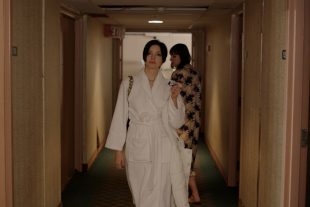
Were you always interested in making horror your specialty?
Yeah, I’ve always liked The Twilight Zone and horror films from the time I was a little kid. I didn’t really watch horror, but I liked melodramas. I liked more than horror. I liked melancholy and drama and dread.
Were you ever discouraged from exploring horror, considering it was largely a boys’ club when you were first starting out?
Yes. When I went to grad school for film, I wanted to tell these stories, and they wrote them off as being very lowbrow and campy. They made me feel like I was stupid and just lowbrow [laughs]. So, I would really try not to do those stories, but I kept coming back to them. Until I made Lyle, my first film, I didn’t really know women weren’t making horror, so it was a surprise to me. And I had always had a story that I wanted to tell. I’d never really watched slasher films or contemporary horror, but I knew a lot about old horror. I didn’t know why I was thinking of it differently until I started my first horror film. I knew that people thought it was lowbrow, but then when I made horror, I was so surprised by how many women said, “Well, I would never watch that.” I really had to learn that women think that horror is just bad and tacky. And in fact, while trying to raise money for my second film, in the beginning there were people who would just straight out say, “No, I would never support a horror film.” Now horror has a big appreciation.
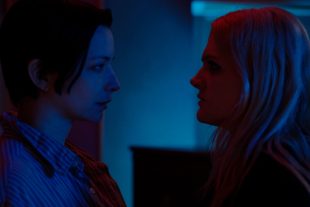
Do you feel that the LGBTQ community is underserved when it comes to horror?
Well, in some ways I do. Of course, it depends what you are talking about because horror has always traditionally been a home for underrepresented and marginalized people and voices and ideas and storylines. It’s only when you think of the big slasher movies where they start to lean really into the tropes and stuff like that. That’s just one kind of movie that took over the brand, and it’s not always been like that. It’s just a few bad decades [laughs].
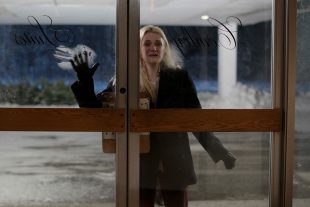
The shadow of The Shining looms large over Bad Things, but you’ve said that some of the influences weren’t even apparent when you made the film, that they just kind of showed up. Could you elaborate on that?
Yeah, sometimes I just don’t even know my own brain. After I wrote the first draft of Lyle, I was like, “Oh, I just wrote the Lesbian Rosemary’s Baby.” And with this one, I always loved The Shining, but I didn’t know that I was kind of writing that at all. I don’t think Bad Things is a homage, and I don’t think I’m copying. It’s just like a compulsion to reframe it. I love the movie, I want to understand it, but I also want to take it away and be like, “No, look at it this way.”

Was it difficult to make your brightly lit hotel location scary and atmospheric?
No, I would never do it any other way. For me, beauty and dread can coexist. It’s much scarier to be visited by something dreadful when you weren’t expecting it. There’s no escaping, there’s no shadow to hide out in.
The film’s only male victim gets the most protracted death scene in the film. Was that payback?
Yes [laughs]. You called me on that one. In a fun way, but yeah.
Ruthie’s rage is so palpable in the movie. How did actress Gayle Rankin channel that? How did you get that out of her?
Honestly, Gayle Rankin is such a force, and it’s only the tip of the iceberg of what she can give. She’s just bursting at the seams; she has fountains of emotion and strength and power and vulnerability. That wasn’t hard [to direct], is what I’ll say [laughs].
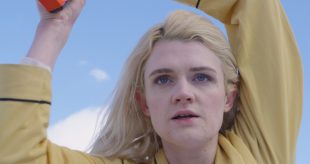
When did Shudder become involved in the production?
Shudder was part of it from the beginning, reading scripts and stuff like that. It was deeper into the process, before we started production.
Did they suggest getting name actress Molly Ringwald (as the mother of the lead character) in the cast for international sales?
They were always really supportive of my vision throughout, but of course, Molly Ringwald was way exciting for everybody [laughs]. That was a dream for everyone.
She certainly isn’t known for horror. Did she take to the material?
A lot of times when you go out to your dream actor, you’re sitting around waiting at least a couple weeks for them to have the time to read it, and then you have to wait to set up a time, and then they need to think about it. We thought with Molly, “Oh, this is really our dream, but it’ll take so long for her to read it.” And she read it two days later, and we were Zooming the next day and then she said, “Yes.” It was the shortest [wait time]. That’s a testament to Molly joining this strange, independent and low-budget horror film: She knew what she liked and just jumped right in and didn’t hesitate. She’s really got an art heart, and I love that about her. She is wonderful and such a collaborator and so artistic and powerful.
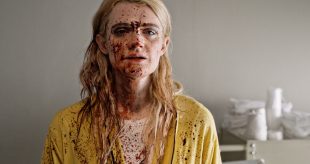
You have the classic horror weapon with your chainsaw finale. What led you to bring in such an iconic murder tool?
I wanted to reclaim the chainsaw too because it was originally this gynecological tool for cesarean sections that was designed in Scotland. And I just thought, “That’s not fair.” But it’s also just very operatic and dramatic, and it’s got all that sound and it’s so terrifying and phallic too. And so, it’s hard to resist. It’s a little elaborate; I wanted to go there because that’s how I felt about the story.
What can you say about the last chapter in this trilogy? What’s the status of it?
The first of the three, Lyle, was about wanting to have a child and wondering if you had a right to being almost afraid to have a child. And this one is about the power of a mother and a daughter and that relationship. The third one is about trying to be the perfect mother and how that can go wrong. But the next movie I’m actually going to make is a slasher film with older women. Then I’m going to come back to the third one of this trilogy.
And finally, what thoughts are going through your head with the Tribeca Film Festival premiere looming?
Well, it’s just in a couple hours, and I’m so proud to be part of it. And I feel like I’m swooning and I feel like the whole city’s excited, but that might just be my ego [laughs]. I’ve been waiting for it, and it’s all so exciting and all the actors and I are all so thrilled. I’m nervous and excited…it’s a dream come true.
You can follow Tony Timpone on Facebook, Twitter (@TonyTimpone1) and Instagram (timponetony).




